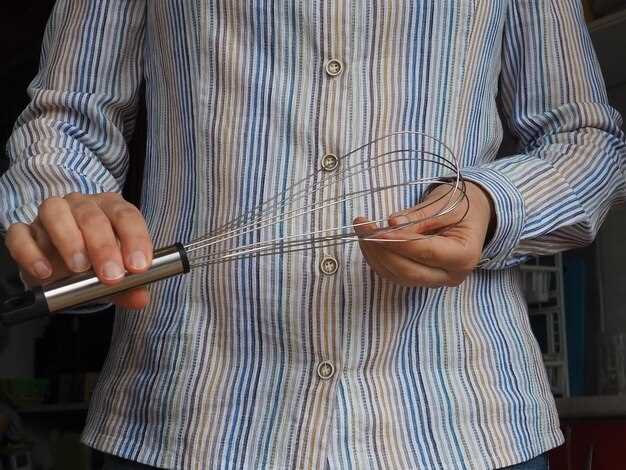
Regular maintenance of your vehicle is crucial to ensure its longevity and performance. One often overlooked aspect of this maintenance is the inspection of belts and hoses. These components play a vital role in the operational efficiency of your car, contributing to everything from engine cooling to power steering. Over time, belts and hoses can experience wear and tear due to heat, friction, and exposure to various elements.
Identifying signs of wear in hoses and belts early can prevent expensive repairs down the road. Cracks, fraying, and discoloration are common indicators that these parts may be failing. Regular visual inspections can help you detect these issues before they lead to severe engine problems or breakdowns. Additionally, understanding the lifespan of your vehicle’s belts and hoses can help establish a proactive maintenance schedule, ensuring optimal performance and safety.
In this article, we will explore the various methods for inspecting belts and hoses, the signs to look for, and tips on how to maintain these critical components effectively. Being knowledgeable about the condition of your vehicle’s belts and hoses is an essential step in safeguarding your investment and ensuring smooth operation on the road.
Identifying Common Signs of Wear in Belts

Regular maintenance of belts is crucial for ensuring optimal performance and longevity of your vehicle’s engine. Over time, belts can show signs of wear that may indicate they need replacement. Here are some common indicators to look for.
Cracks and Fraying: One of the most noticeable signs of wear is the appearance of cracks or fraying along the surface of the belt. These imperfections can compromise the belt’s integrity, leading to potential failure if not addressed promptly.
Glazing: A shiny or glossy appearance on the belt’s surface, known as glazing, is another sign of wear. This occurs when the belt slips or experiences excessive heat, reducing its grip and efficiency.
Worn Edges: Inspect the edges of the belt for signs of wear. If the edges are uneven or severely worn down, it can indicate that the belt is no longer functioning properly and may require replacement.
Squeaking or Noise: Unusual noises such as squeaking can signal that a belt is worn or misaligned. Such sounds often indicate insufficient tension or surface degradation, which should not be ignored.
Visible Signs of Damage: Look for any obvious signs of damage such as splits or chunks missing from the belt. These issues can lead to belt failure and require immediate attention to avoid further complications.
Age of the Belt: Besides physical inspections, consider the age of the belt. Most vehicle manufacturers recommend replacing belts every 60,000 to 100,000 miles, regardless of their appearance. This preventive maintenance can help avoid unexpected breakdowns.
Being proactive in identifying these signs of wear in belts can prevent costly repairs and ensure the reliable operation of your vehicle. Regular inspections are essential to maintain the functionality and safety of your engine components.
Assessing the Condition of Rubber Hoses
Rubber hoses play a critical role in the operation of various automotive systems, including cooling, braking, and fuel delivery. Regular inspection is essential to ensure these components remain functional and safe. Start by examining the exterior of the hoses for visible signs of wear. Look for cracks, splits, or bulges that may indicate aging or damage. Such imperfections can compromise the hose’s integrity and lead to leaks or failures.
Next, check the flexibility of the rubber. Hoses should feel pliable; if they are brittle or stiff, it may indicate deterioration. Gently squeeze each hose to assess its resilience. If it feels hard or cracks easily, replacement is necessary to avoid potential breakdowns.
Pay attention to any fluid leaks around the hose connections, as this can be a sign of a failing hose or loose fittings. Additionally, ensure that brackets and clamps securing the hoses are intact and functional. Loose fittings can lead to increased pressure and eventual failure.
Consider the age of the hoses in relation to the vehicle’s maintenance history. Most manufacturers recommend replacing rubber hoses every four to six years, even if no visible signs of wear are present. Regular maintenance, including the evaluation of belts, can prevent premature wear on hoses and contribute to overall vehicle safety.
Tools Needed for Belt and Hose Inspection

Inspecting belts and hoses is a crucial part of vehicle maintenance. To ensure a thorough inspection, a variety of tools are necessary. Here is a detailed list of tools you should have on hand:
- Flashlight: A bright flashlight is essential for illuminating areas that may be difficult to see. This helps to check for signs of wear, fraying, or leaks.
- Safety Glasses: Protect your eyes while inspecting belts and hoses, especially if any components may break or splatter during the process.
- Hose Clamp Pliers: These specialized pliers help remove and replace hose clamps without damaging the hoses or surrounding components.
- Wrenches or Socket Set: A set of wrenches or sockets is necessary for loosening and tightening bolts securing hoses and belts.
- Torque Wrench: For reattaching components, a torque wrench ensures that connections are secured to the manufacturer’s specified tightness.
- Inspection Mirror: A small, handheld mirror can provide visibility to hard-to-reach places, making it easier to spot any issues on belts and hoses.
- Pic or Probe Tool: This tool can help check for softness or brittleness in hoses, indicating potential failure.
- Digital Caliper: To measure belt thickness and ensure they are within acceptable limits, a digital caliper is useful.
By having these tools readily available, you can perform a comprehensive inspection of belts and hoses, identifying potential issues before they lead to failure. Regular checks will enhance vehicle reliability and safety.
Step-by-Step Guide to Belt Inspection
Inspecting belts is crucial for maintaining optimal performance in your vehicle. Follow this comprehensive guide to ensure each belt is in good condition and functioning properly.
Step 1: Gather Tools
Before beginning the inspection, gather the necessary tools:
- Flashlight
- Inspection mirror
- Ruler or measuring tape
Step 2: Visual Inspection
Begin with a visual examination. Look for visible signs of wear such as cracks, fraying, or glazing. Pay attention to the following areas:
| Inspection Area | Signs of Wear |
|---|---|
| Belt Surface | Cracks, missing chunks, or uneven wear |
| Belt Edges | Fraying or splitting |
| Surface Texture | Shiny/glazed appearance indicating slipping |
Step 3: Check Tension
Proper tension is essential for belt performance. Press down on the belt midway between the pulleys. It should deflect about half an inch when applying moderate pressure. If deflection is too high or low, adjustment is necessary.
Step 4: Inspect Alignment
Misalignment can lead to premature wear. Use an inspection mirror to check that the belt runs straight across the pulleys. Look for signs of uneven wear which indicate alignment issues.
Step 5: Rotate Components
Manually rotate the components connected by the belt to ensure they turn freely without any grinding noise. This helps determine if the belt is functioning efficiently with all associated parts.
Step 6: Document Findings
Keep a record of your inspection results. Note any signs of wear or necessary adjustments for future reference. Regular documentation can help track the deterioration of belts over time.
Step 7: Replace if Necessary
If any significant wear or damage is observed, replace the belt immediately to prevent catastrophic failure. Following manufacturer guidelines for belt replacement is essential for optimal performance.
By adhering to these steps, you can ensure that each belt in your vehicle remains in excellent condition and reduces the likelihood of unexpected failures.
Step-by-Step Guide to Hose Inspection
Inspecting hoses is a crucial part of vehicle maintenance, ensuring safety and optimal performance. Follow this step-by-step guide to thoroughly examine and assess the condition of hoses.
Step 1: Gather Necessary Tools
Before you begin, collect the tools required for the inspection. Common tools include a flashlight, a screwdriver, and maybe a mirror for hard-to-reach areas.
Step 2: Visual Inspection
Start with a visual inspection of all hoses connected to the engine, cooling system, and any other components. Look for signs of wear such as cracks, splits, blisters, or soft spots. Pay attention to the connections where the hoses meet the engine or radiator.
Step 3: Check for Leaks
Check for any signs of leaking fluids around the hoses. An accumulation of fluid can indicate a failing hose. Use a clean cloth to wipe the areas around the hose connections and look for any fresh moisture.
Step 4: Flexibility Test
Gently squeeze and flex the hoses as you inspect them. They should feel sturdy yet flexible. If a hose feels brittle or crumbles under slight pressure, it may need to be replaced.
Step 5: Inspect Hose Clamps
Examine the clamps securing the hoses. Ensure they are tight and free from rust or corrosion. Worn or loose clamps can lead to leaks and must be tightened or replaced as necessary.
Step 6: Evaluate Age and Mileage
Consider the age and mileage of the hoses. Rubber hoses typically should be inspected regularly and replaced every 4 to 6 years, regardless of their appearance. Mileage can also play a role in their deterioration.
Step 7: Document Findings
Keep a record of any issues found during the inspection, noting the location and severity. This documentation can help in future assessments and maintenance scheduling.
Step 8: Plan for Replacement
If you identify any damaged hoses, plan for their replacement immediately. Addressing issues promptly helps avoid more severe problems down the line.
Regular hose inspections are vital for maintaining your vehicle’s performance. Following these steps will help ensure your hoses remain in good condition and prevent unexpected failures.
When to Replace Worn Belts and Hoses
Regular inspection of belts and hoses is crucial for vehicle maintenance. Drivers should replace these components when they show obvious signs of wear, such as cracks, fraying, or glazing. It is essential to check the tension of belts; if they appear loose or do not maintain proper tension, replacement is necessary to avoid slippage or complete failure.
Another key indicator for replacement is age. Most manufacturers recommend changing belts every 60,000 to 100,000 miles, while hoses should be replaced every four to five years, even if they appear to be in good condition. Heat and antifreeze can significantly degrade rubber materials over time, leading to unexpected breakdowns.
Additionally, if a vehicle experiences overheating, it is vital to inspect hoses for leaks or bulges. Any sign of fluid leaking from a hose connection should prompt immediate replacement to prevent engine damage. Regular maintenance and keeping an eye on these components can enhance vehicle reliability and avoid costly repairs in the future.
